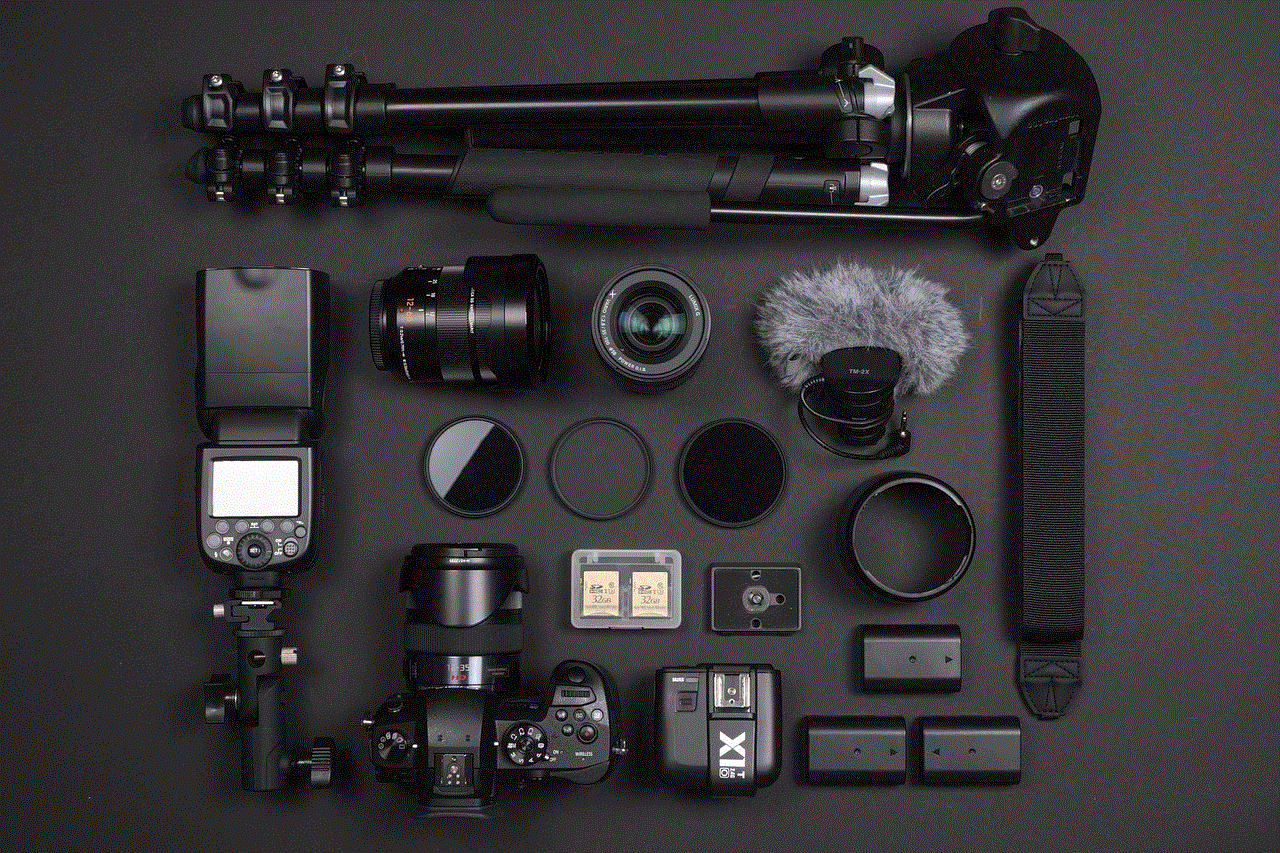deactivated profile picture
In today’s digital age, social media has become an integral part of our lives. It allows us to connect with friends and family, keep up with the latest news and trends, and share our thoughts and experiences with the world. One of the most popular social media platforms is Facebook, with over 2.8 billion active users as of 2021. With such a massive user base, it’s no surprise that Facebook has become an essential tool for businesses, individuals, and organizations alike.
One of the key features of Facebook is the profile picture. Your profile picture is the first thing people see when they visit your profile, and it’s often used as a way to identify you on the platform. However, there may come a time when you decide to deactivate your profile picture. This could be for various reasons, such as privacy concerns, a change in your appearance, or simply because you want to take a break from social media. In this article, we will discuss the concept of a deactivated profile picture on Facebook and its implications.
To start, let’s first understand what deactivating a profile picture means. When you deactivate your profile picture on Facebook, it essentially means that you are hiding it from public view. This means that it will no longer be visible to your friends, followers, or anyone who visits your profile. Your profile picture will be replaced by a default gray avatar, indicating that it has been deactivated. It’s important to note that deactivating your profile picture doesn’t delete it permanently. You can reactivate it at any time, and all your previous likes, comments, and tags will be restored.
So, why would someone want to deactivate their profile picture on Facebook? One of the main reasons is privacy. In today’s world, where online privacy is a major concern, many people are becoming more conscious about the information they share on social media. Your profile picture is often used as a way to identify you, and some people may not want their picture to be visible to everyone. By deactivating their profile picture, they can have more control over their online presence and limit the amount of information available about them on Facebook.
Another reason for deactivating a profile picture could be a change in appearance. Your profile picture is often a representation of yourself, and if you no longer look like the picture, it can be misleading. For example, if you have recently changed your hairstyle, gained or lost weight, or have any physical changes, your profile picture may not accurately reflect your current appearance. By deactivating it, you can avoid any confusion or misrepresentation.
Furthermore, some people may choose to deactivate their profile picture because they are taking a break from social media. Being constantly connected to social media can be overwhelming and can lead to feelings of stress and anxiety. By deactivating their profile picture, people can take a step back and disconnect from the platform without completely deleting their account.
However, there are also some drawbacks to deactivating a profile picture on Facebook. One of the main disadvantages is that it can limit your online presence. Your profile picture is often used as a way to identify you, and by deactivating it, you may become less visible to your friends, family, and followers. This can make it difficult for people to find and connect with you on the platform.
Moreover, deactivating your profile picture can also affect your online credibility. In today’s digital world, having a strong online presence is essential, especially for businesses and professionals. Your profile picture is often the first impression people have of you on social media, and by not having one, it may raise questions about your authenticity and credibility.
Additionally, deactivating your profile picture can also affect your engagement on the platform. Your profile picture is often used as a way for people to engage with your posts, such as liking, commenting, or tagging you. By deactivating it, you may miss out on these interactions, which can affect your overall engagement on the platform.
In conclusion, deactivating a profile picture on Facebook is a personal choice that can have both pros and cons. It can provide a sense of privacy and control over your online presence, but it can also limit your visibility and credibility on the platform. Ultimately, it’s up to the individual to decide whether deactivating their profile picture is the right choice for them. However, it’s important to note that Facebook offers various privacy settings that can help you manage your profile picture without having to deactivate it completely. So, before making a decision, it’s worth exploring these options and finding the best solution that suits your needs.
dating apps for 12-14 year olds
In recent years, the popularity of dating apps has skyrocketed among teenagers. With the rise of technology and social media, it is easier than ever for young people to connect and interact with others through their phones. However, the question remains – should 12-14 year olds be using dating apps? In this article, we will explore the various aspects of dating apps for this age group and discuss the potential risks and benefits.
First and foremost, it is important to understand what dating apps are and how they work. Dating apps are online platforms that allow users to create a profile, browse through other users’ profiles, and communicate with potential matches. These apps use algorithms to match users based on their preferences, location, and other factors. While some popular dating apps such as Tinder and Bumble have a minimum age requirement of 18, there are other apps specifically designed for younger users, such as Yubo and Spotafriend, which allow users as young as 12 to create an account.
One of the main reasons why 12-14 year olds are drawn to dating apps is the desire for social interaction. At this age, teenagers are starting to explore romantic relationships and are often curious about dating. Dating apps provide an easy and convenient way for them to meet and connect with new people. However, this can also lead to many potential dangers, as these young users may not have the necessary maturity and understanding to navigate the complex world of online dating.



One of the biggest concerns surrounding dating apps for 12-14 year olds is the potential for online predators to target vulnerable young users. These individuals may create fake profiles and manipulate young users into meeting them in person, putting them at risk of physical, emotional, and sexual abuse. Furthermore, young users may also be exposed to inappropriate content and explicit messages from older users, which can have a detrimental impact on their mental and emotional well-being.
Moreover, dating apps can also have a negative impact on the self-esteem and body image of young users. Many dating apps place a strong emphasis on physical appearance, with users often swiping left or right based solely on someone’s profile picture. This can lead to feelings of inadequacy and pressure to conform to societal beauty standards, especially for young girls. In addition, constant comparison to others on these apps can also contribute to low self-esteem and a negative body image, leading to potential mental health issues such as depression and anxiety.
On the other hand, there are some potential benefits to dating apps for 12-14 year olds. These apps can provide a safe and controlled environment for young users to explore their feelings and learn about relationships. They can also help teenagers build social skills and learn how to communicate effectively with others. In addition, dating apps can also provide a sense of validation and acceptance for young users, as they receive likes and matches from their peers.
Another benefit of dating apps for this age group is the opportunity for LGBTQ+ teens to connect with others who share similar experiences and struggles. These apps can provide a safe space for them to explore their sexuality and find acceptance and support from their peers. However, it is important to note that not all dating apps have strict policies against discrimination and hate speech, so it is crucial for young users to be cautious and report any instances of bigotry or harassment.
In addition, dating apps can also be a useful tool for parents to monitor and guide their children’s online activities. By discussing the potential risks and setting boundaries with their children, parents can help them navigate the world of dating apps safely. It is also recommended for parents to have access to their child’s account and regularly check their messages and matches to ensure their safety.
In conclusion, the use of dating apps for 12-14 year olds is a controversial topic with valid arguments on both sides. While these apps can provide a platform for young users to connect and explore their feelings, they also pose significant risks and dangers. It is crucial for parents to have open and honest conversations with their children about the potential risks and to monitor their online activities closely. Ultimately, the decision to use dating apps at this age should be made with caution and consideration of the individual’s maturity and understanding of relationships.
do screenshots show on tinder
Screenshots have become an integral part of our digital lives, with the rise of social media platforms and messaging apps. They allow us to capture and share moments, conversations, and information with just a click of a button. And with the ever-growing popularity of dating apps, it’s no surprise that screenshots have found their way into the online dating world, specifically on Tinder.



Tinder, launched in 2012, has revolutionized the dating scene by providing a platform where users can swipe through profiles and match with potential partners based on their location and preferences. With over 50 million users worldwide, it has become one of the most popular dating apps, especially among millennials. However, with its popularity, comes the inevitable question – do screenshots show on Tinder? Let’s find out.
Firstly, it’s important to understand what a screenshot is and how it works. A screenshot, also known as a screen grab or screen capture, is a digital image of what is displayed on a device’s screen. It is a useful tool to capture and save information, images, or videos that cannot be saved or downloaded directly. Screenshots can be taken on various devices, including smartphones, tablets, and computers, by pressing a combination of buttons or using specific apps or software.
Now, coming back to our question – do screenshots show on Tinder? The answer is yes and no. Let us break it down for you. When you take a screenshot on Tinder, the other person will not be notified that you have taken one. This is because Tinder, like many other dating apps, does not have a feature that alerts users when someone takes a screenshot of their profile or conversations. So, in that sense, screenshots do not show on Tinder.
However, there is a catch. If you have mutual friends on Facebook with the person you are screenshotting, they might get notified if you share the screenshot on Facebook. This is because Tinder has an option to link your Facebook account to your profile, and if you choose to do so, your Tinder activity, including screenshots, can be seen by your Facebook friends. This feature is known as “Tinder Social.”
Moreover, if you have a premium subscription on Tinder, called Tinder Gold or Tinder Plus, you can see who has liked your profile. This means that if someone takes a screenshot of your profile, it will be evident to you when you see their name on the list of people who have liked you. However, the screenshot itself will not be visible.
So, why is there no notification system for screenshots on Tinder, unlike other social media platforms like Instagram or Snapchat ? The answer lies in the nature of the app itself. Tinder is primarily a dating app, and unlike Instagram , where people share pictures and videos, or Snapchat , where the content disappears after a few seconds, Tinder is more about connecting with people and having conversations. It is not a platform where people share personal information or private conversations, making the need for a notification system for screenshots unnecessary.
While some may see the lack of a screenshot notification system as a disadvantage, it also has its advantages. It allows users to have more freedom and privacy while using the app. They can have conversations without the fear of their words being captured and shared without their consent. It also reduces the chances of misunderstandings or conflicts arising from screenshots being taken out of context.
However, as with any other online platform, there is always a risk of privacy invasion and misuse of information. Users should be cautious while sharing personal information or photos on Tinder, as there is always a possibility of someone taking a screenshot and sharing it with others. Moreover, with the rise of catfishing and online scams, it is essential to be mindful of who you are talking to on the app and not share any sensitive information.



In recent years, Tinder has introduced new features to enhance user safety and security, such as photo verification and a panic button. These features aim to minimize the risks of fake profiles and dangerous situations while using the app. However, they do not address the issue of screenshots, which is not a significant concern for the majority of users.
In conclusion, while screenshots do not show on Tinder in the traditional sense, there are still ways in which they can be seen or shared. The lack of a notification system for screenshots on Tinder can be seen as a positive aspect, as it promotes privacy and gives users more freedom while using the app. However, caution should always be exercised when sharing personal information or photos on any online platform, including Tinder. With the right mindset and awareness, one can enjoy using Tinder without the fear of screenshots ruining their online dating experience.
